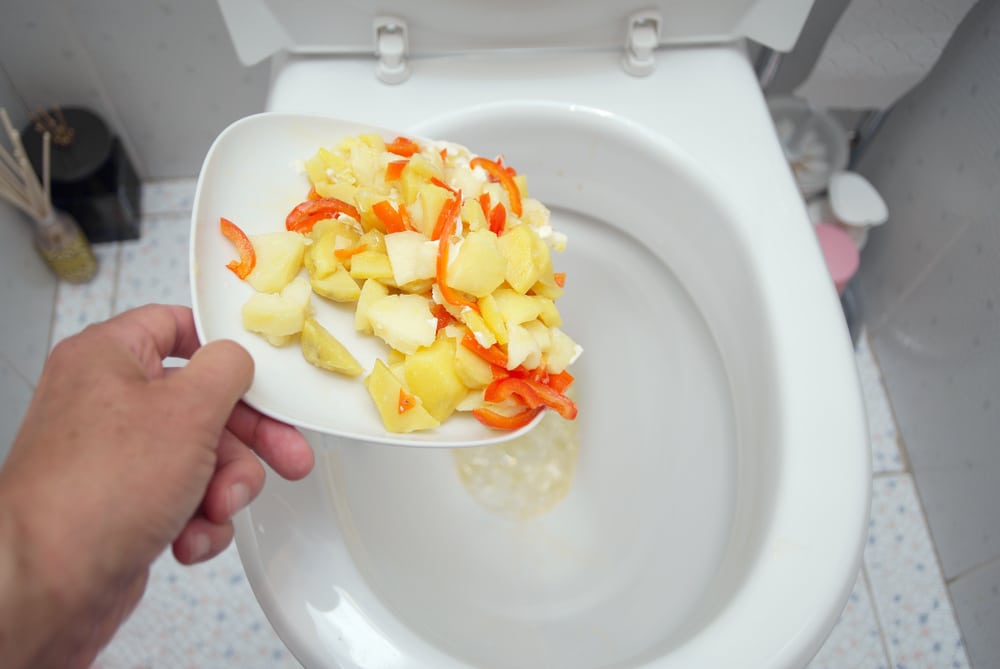Can One to Flush Food in the Toilet?
Can One to Flush Food in the Toilet?
Blog Article
How do you really feel in regards to Flushing Food Down the Toilet??

Introduction
Many people are frequently confronted with the issue of what to do with food waste, specifically when it comes to leftovers or scraps. One usual inquiry that emerges is whether it's okay to purge food down the toilet. In this short article, we'll look into the reasons that people could think about flushing food, the effects of doing so, and alternate approaches for appropriate disposal.
Reasons that people may consider flushing food
Lack of awareness
Some people might not be aware of the prospective damage brought on by purging food down the commode. They might incorrectly believe that it's a harmless practice.
Benefit
Flushing food down the toilet might seem like a fast and very easy option to getting rid of unwanted scraps, particularly when there's no close-by trash bin readily available.
Negligence
In some cases, individuals might simply pick to flush food out of large idleness, without thinking about the repercussions of their activities.
Consequences of flushing food down the toilet
Ecological impact
Food waste that ends up in waterways can add to pollution and harm marine environments. Additionally, the water utilized to flush food can stress water resources.
Plumbing problems
Flushing food can cause clogged up pipelines and drains pipes, triggering expensive plumbing repair services and aggravations.
Sorts of food that ought to not be purged
Fibrous foods
Foods with coarse appearances such as celery or corn husks can get tangled in pipes and cause clogs.
Starchy foods
Starchy foods like pasta and rice can absorb water and swell, resulting in obstructions in pipelines.
Oils and fats
Greasy foods like bacon or cooking oils ought to never be flushed down the toilet as they can solidify and create blockages.
Correct disposal methods for food waste
Utilizing a garbage disposal
For homes equipped with garbage disposals, food scraps can be ground up and flushed with the pipes system. Nonetheless, not all foods appropriate for disposal in this fashion.
Recycling
Certain food packaging products can be reused, reducing waste and reducing environmental impact.
Composting
Composting is an eco-friendly way to throw away food waste. Organic products can be composted and utilized to enrich dirt for gardening.
The significance of appropriate waste management
Lowering environmental damage
Proper waste management techniques, such as composting and recycling, help minimize air pollution and protect natural resources for future generations.
Protecting plumbing systems
By avoiding the technique of flushing food down the toilet, homeowners can prevent costly pipes repair work and maintain the integrity of their plumbing systems.
Conclusion
To conclude, while it may be alluring to purge food down the toilet for convenience, it's important to comprehend the potential effects of this action. By adopting appropriate waste monitoring practices and dealing with food waste responsibly, individuals can add to much healthier pipes systems and a cleaner setting for all.
FLUSH FOOD DOWN THE TOILET?
FLUSHING FOOD CAN CAUSE BLOCKED DRAINS IN YOUR HOME
All of the plumbing fixtures in your home are connected to the same sewer pipe outside of your home. This outdoor sewer pipe is responsible for transporting all the wastewater from your home to the Council sewer mains. Even small pieces of food that go down the kitchen sink can cause problems for your sewer. It should therefore be obvious that flushing larger bits of food, such as meat, risks a clog in either the toilet itself or the sewer pipes. Flushing greasy food is even more problematic because oil coagulates when it cools, coating the interior lining of your pipes.
THE TOILET IS NOT A BIN
Food isn’t the only thing that people shouldn’t be flushing down the toilet. People use the toilet to dispose of all kinds of things such as tampons, makeup wipes, dental floss, kitty litter and even underwear. Water goes to great lengths to educate residents about the high costs and stress placed on wastewater treatment systems simply from people flushing the wrong stuff down the toilet. It costs taxpayers millions of dollars each year, and homeowners thousands in blocked drain repairs.
FLUSHING FOOD IS A WASTE OF WATER
Flushing food is a waste of our most precious resource - water. In June this year Level 1 water restrictions were introduced to protect water supply from drought conditions. Much of New South Wales continues to be affected by prolonged drought with recent figures revealing up to 97 per cent of the state remains in drought. Depending on whether you have a single or dual flush toilet, every single flush uses between five and 11 litres of water. In the current climate this is a huge amount of water to be wasting on flushing food that should be placed in the bin (or better yet, the compost).
https://www.jabplumbingsolutions.com.au/blog/can-you-flush-food-down-the-toilet

We had been shown that report on What Can Happen If You Flush Food Down the Toilet? from a pal on a different web property. You should take the time to distribute this blog posting if you enjoyed it. We love reading our article about What Can Happen If You Flush Food Down the Toilet?.
Visit The Following Page Report this page